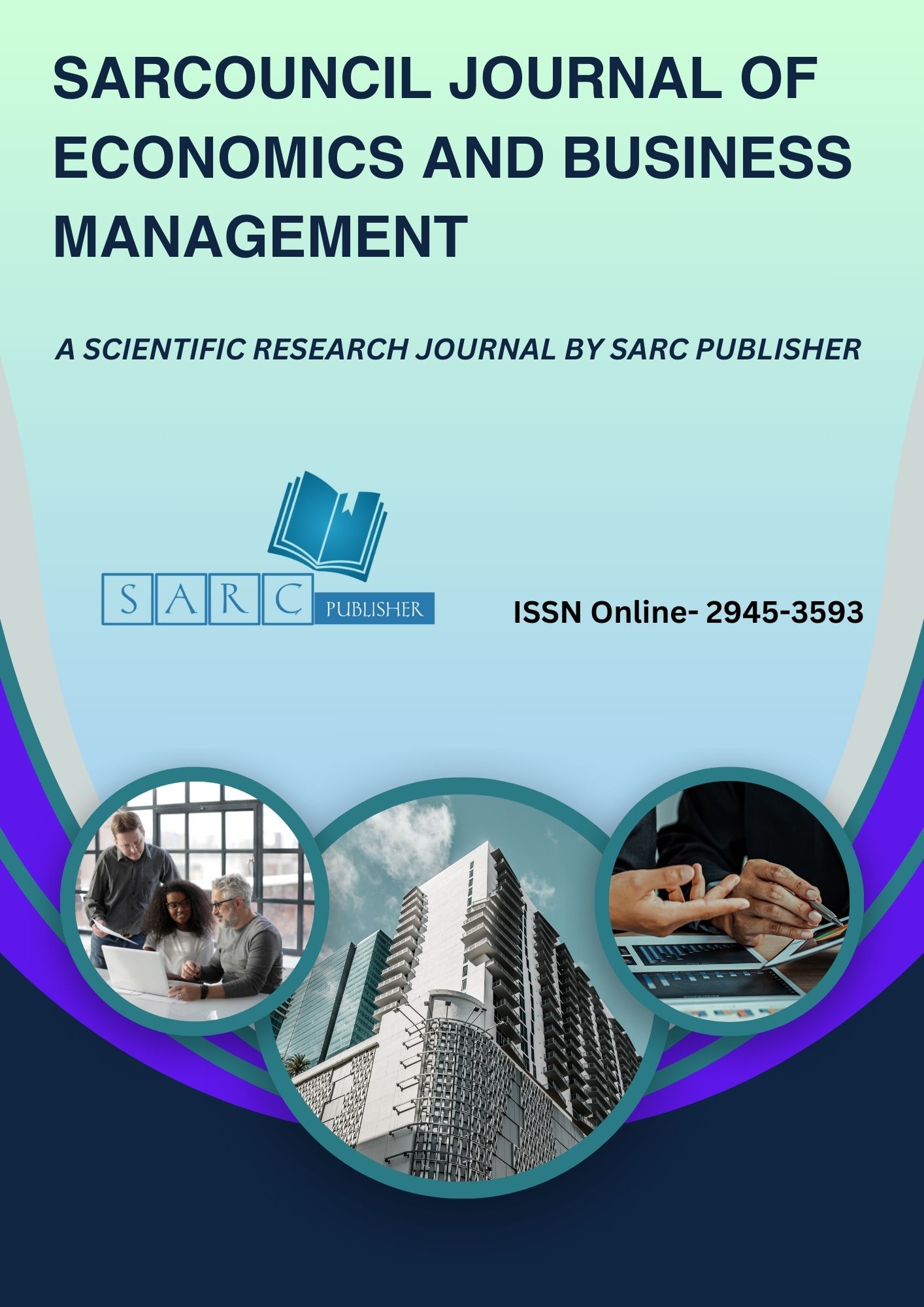Sarcouncil Journal of Economics and Business Management

Sarcouncil Journal of Economics and Business Management
An Open access peer reviewed international Journal
Publication Frequency- Monthly
Publisher Name-SARC Publisher
ISSN Online- 2945-3593
Country of origin- PHILIPPINES
Impact factor- 3.1
Language- English
Keywords
- Accounting, Administrative System, Brand Innovation and Brand Management, Business, Management, Business Economics, Business Policy and Strategy, Critical Management Studies, Data Management, Design Management, Economic Management, Educational Management, Emerging Technology
Editors

Dr Hazim Abdul-Rahman
Associate Editor
Sarcouncil Journal of Applied Sciences

Entessar Al Jbawi
Associate Editor
Sarcouncil Journal of Multidisciplinary

Rishabh Rajesh Shanbhag
Associate Editor
Sarcouncil Journal of Engineering and Computer Sciences

Dr Md. Rezowan ur Rahman
Associate Editor
Sarcouncil Journal of Biomedical Sciences

Dr Ifeoma Christy
Associate Editor
Sarcouncil Journal of Entrepreneurship And Business Management
Enhancing Bankruptcy Prediction Accuracy: The Role of Financial and Non-Financial Indicators in the U.S. Capital Market
Keywords: Bankruptcy, Prediction Accuracy, Financial Indicators, Non-Financial Indicators, Capital Market.
Abstract: Corporate bankruptcy prediction is still a very important issue in the United States capital market because of its effects on investors, regulators, and even policymakers. Classical models of financial distress relying on financial ratios like Altman Z-score have presented a useful, but growingly inadequate, insight into the broad-based, multidimensional causes of financial distress in contemporary markets. The research objective is to improve the accuracy of the prediction of bankruptcy through combining financial and non-financial elements in hybrid and AI-oriented models. Among the objectives are the study of predictive model development, scrutiny of governance, Environmental, Social and Governance (ESG), and macroeconomic determinants, and research of best practices and failures in predicting bankruptcy. The case study of Ford Motor Company and Sears Holdings shows differing results: Ford was able to use governance and ESG-based strategies to remain afloat amidst times of crisis, but Sears failed to take advantage of and ignored non-financial indicators and used old financial models to demonstrate its downfall. The results indicate that hybrid models, which integrate quantitative ratios with qualitative and prospective indicators, have better predictive power, improve early warning systems, and mitigate systemic market risk. Finally, the study draws the conclusion that taking the step of combining financial, non-financial, and macroeconomic indicators by using AI-enhanced models is the future of bankruptcy prediction. These multidimensional strategies offer better, more transparent, policy-relevant tools to investors and regulators, to ensure financial stability and sustainable corporations within the United States capital market.
Author
- Evans Kwodjoe Opoku
- Southern Illinois University Carbondale
- Charles Kudzayi Makoni
- Great Zimbabwe University Harare Campus Zimbabwe
- William Kweku Afresi Buabin
- Methodist University College Ghana

